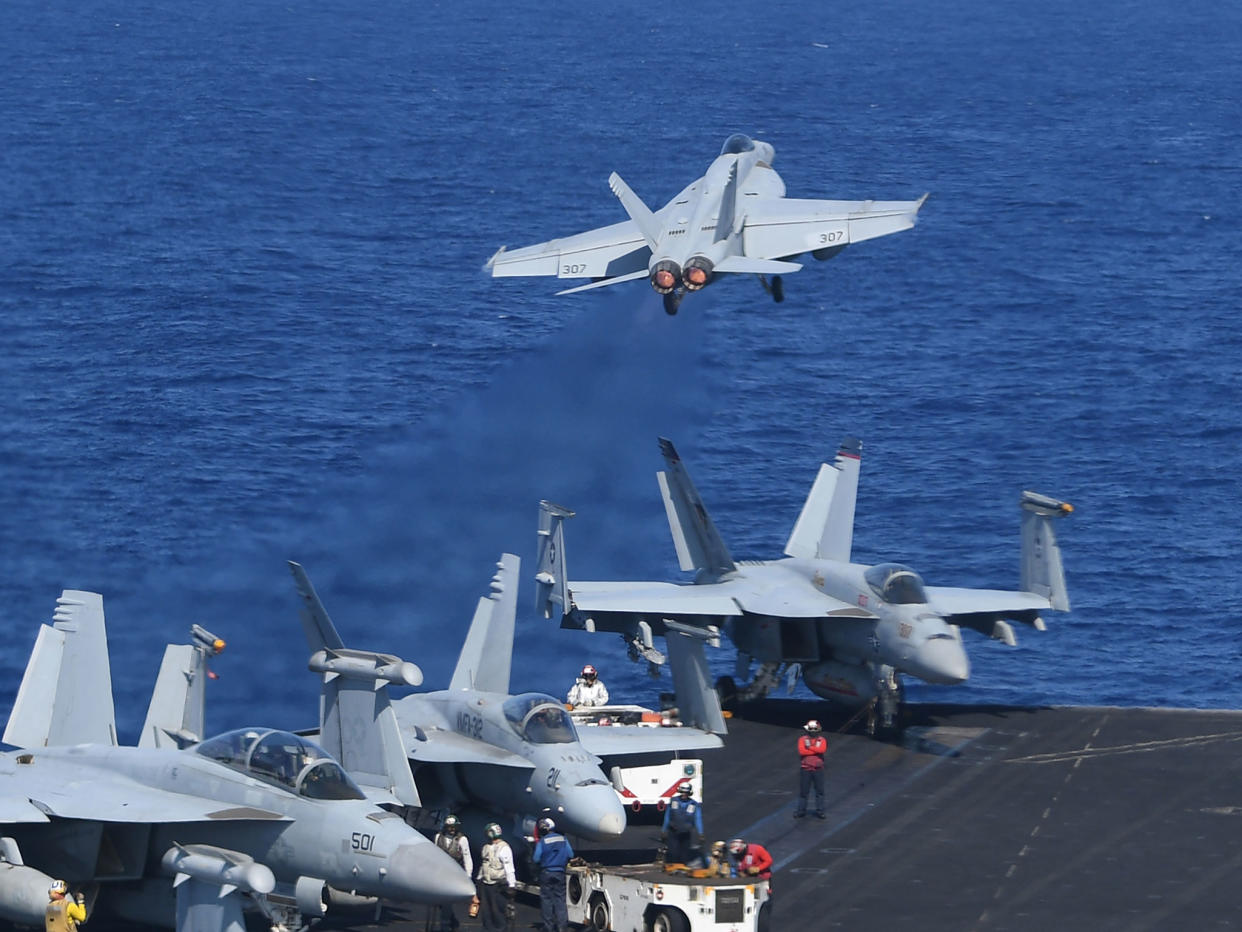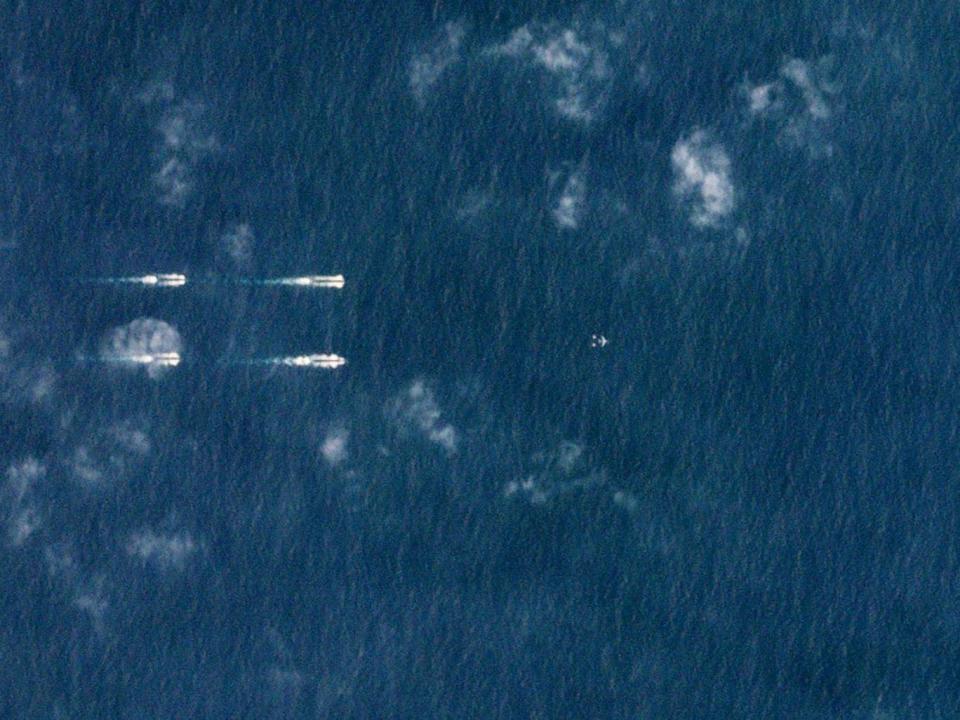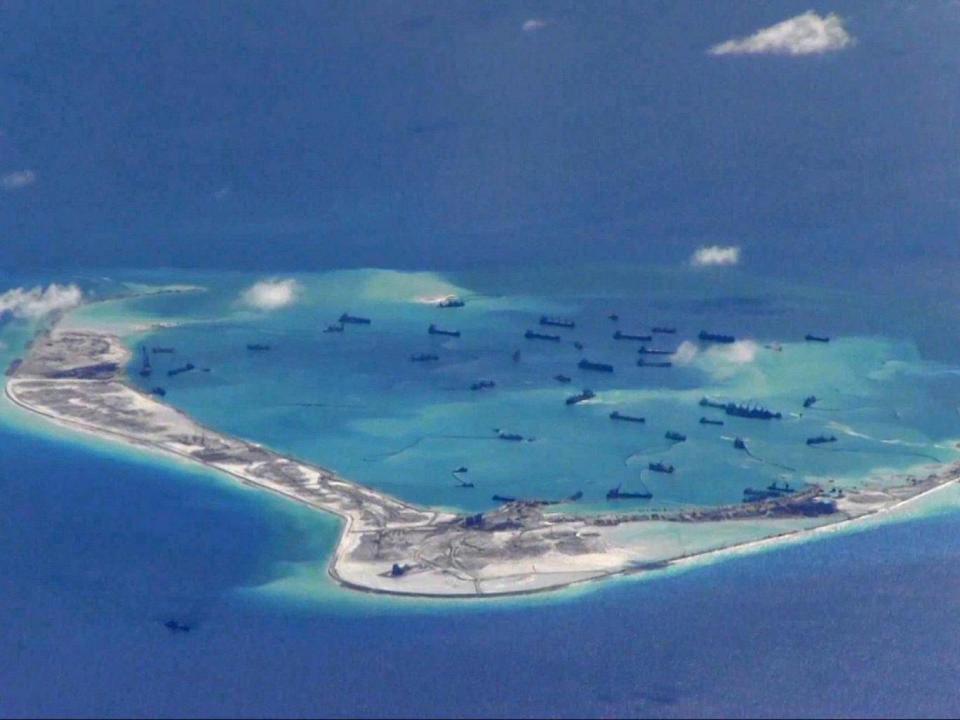US warships sail through South China Sea amid escalating tensions with Beijing

A US aircraft carrier is sailing through the disputed South China Sea in a show of American force.
In a span of 20 minutes, 20 F-18 fighter jets took off and landed on the USS Theodore Roosevelt, providing a powerful display of military precision and efficiency.
The nuclear-powered warship, leading a carrier strike group, was conducting what the US military called routine training in the strategic sea, which China claims almost in its entirety.
The US is not alone in carrying out naval patrols in the strategic waterway, where Chinese, Japanese and some southeast Asian navies operate, possibly increasing tensions and risking accidents at sea.
“We have seen Chinese ships around us,” Rear Admiral Steve Koehler, the strike group commander, said on board the three-decade-old carrier.
“They are one of the navies that operate in the South China Sea but I would tell you that we have seen nothing but professional work out of the ships we have encountered.”
Navies in the western Pacific, including China and nine southeast Asian countries, have been working on a code of unexpected encounters (CUES) at sea to avoid conflict.
The USS Theodore Roosevelt’s presence in the South China Sea comes days after China’s massive air and naval drills in the area, in what some analysts described as an unusually large display of Beijing’s growing naval might.

The US has criticised China’s apparent militarisation of manmade islands and carried out regular air and naval patrols to assert its right to freedom of navigation in stretches of the sea.
“This transit in the South China Sea is nothing new in our planning cycle or in a reaction to that. It is probably by happenstance that all that is happening at the same time,” said Mr Koehler, who gave a tour of the carrier to Philippine military officials and watched flight operations aboard the 100,000-tonne warship.
“All of the operations that we do in and around the South China Sea or any of the bodies of water we operate in, there is a function of international law and that is ultimately what we want to recognise,” he said.
China has long objected to US military operations off its coasts, even in areas Washington insists are free to international passage.
“They [China] certainly have the right to exercise off their coast like we do, nor are they necessarily in charge of our transit cycle, but our deployment’s been planned,” Mr Koehler said.

On Tuesday, China’s defence ministry said the country was entitled to strengthen its defences on islands in the South China Sea, but said those measures aren’t directed at any specific countries.
China’s military deployments are “the natural right of a sovereign nation that helps safeguard national sovereignty and security,” Ren Guoqiang said in a statement posted on the ministry’s website.
They also help protect navigation safety, “serve to ensure regional peace and stability and are not directed at any country,” Mr Ren said.

